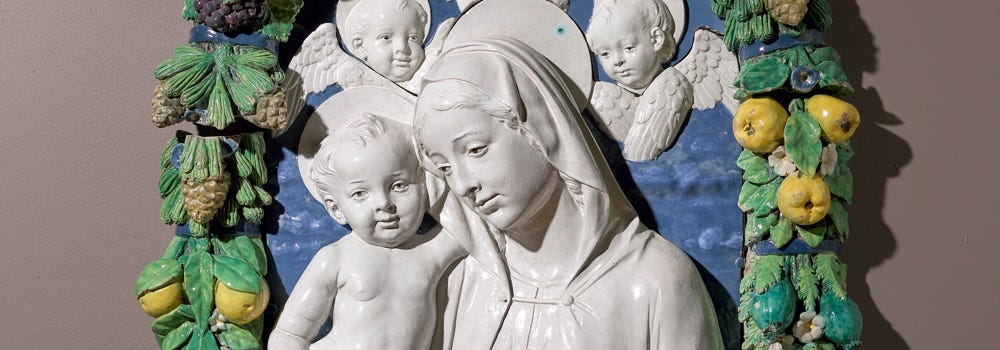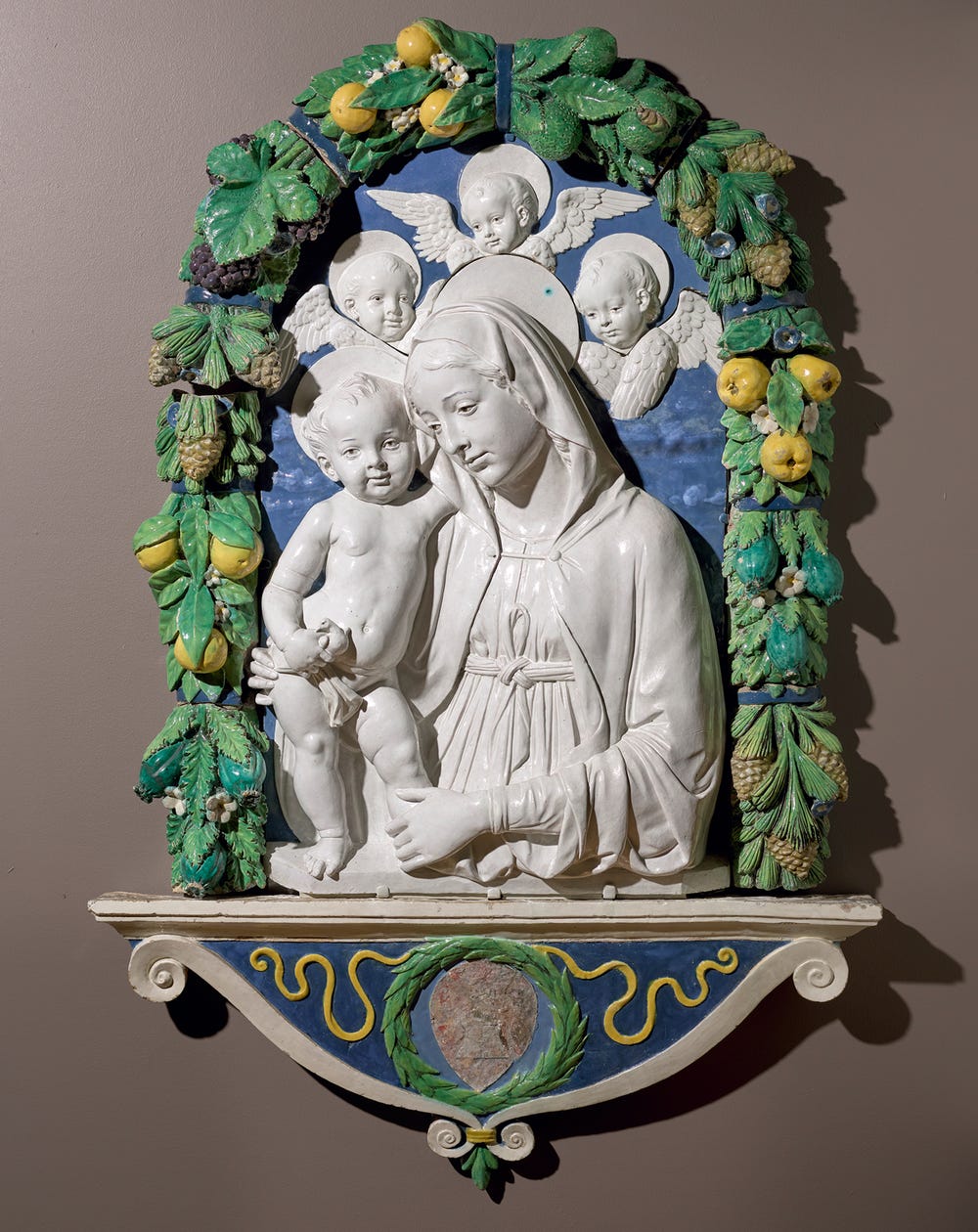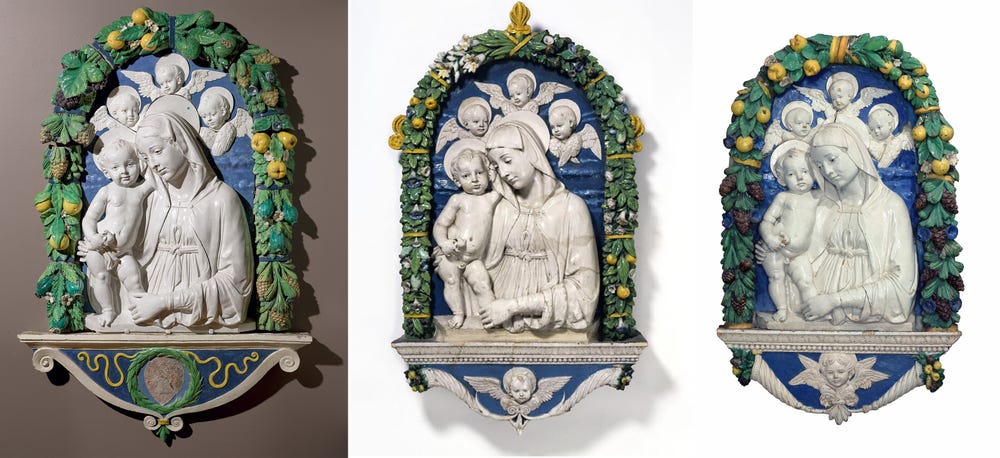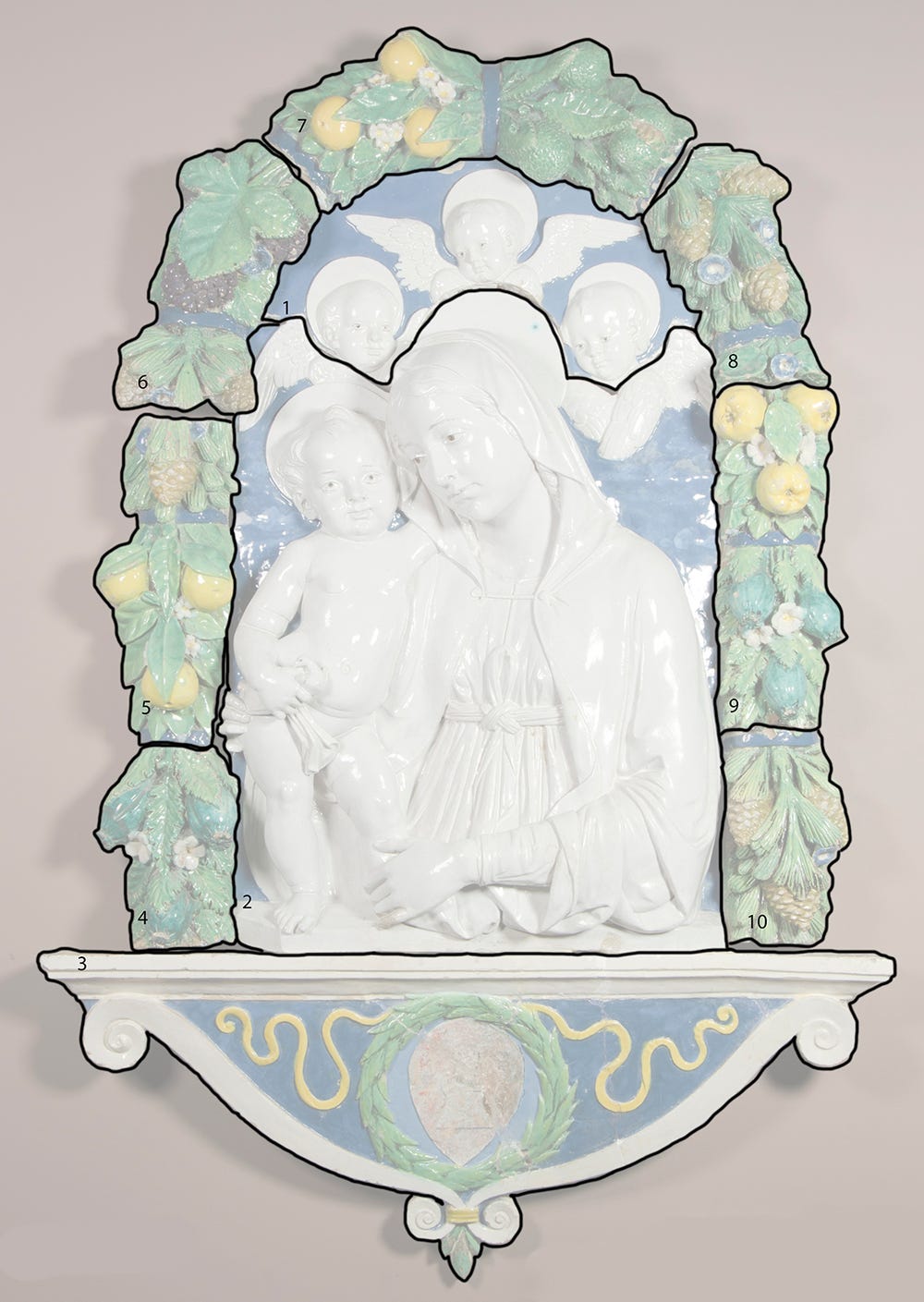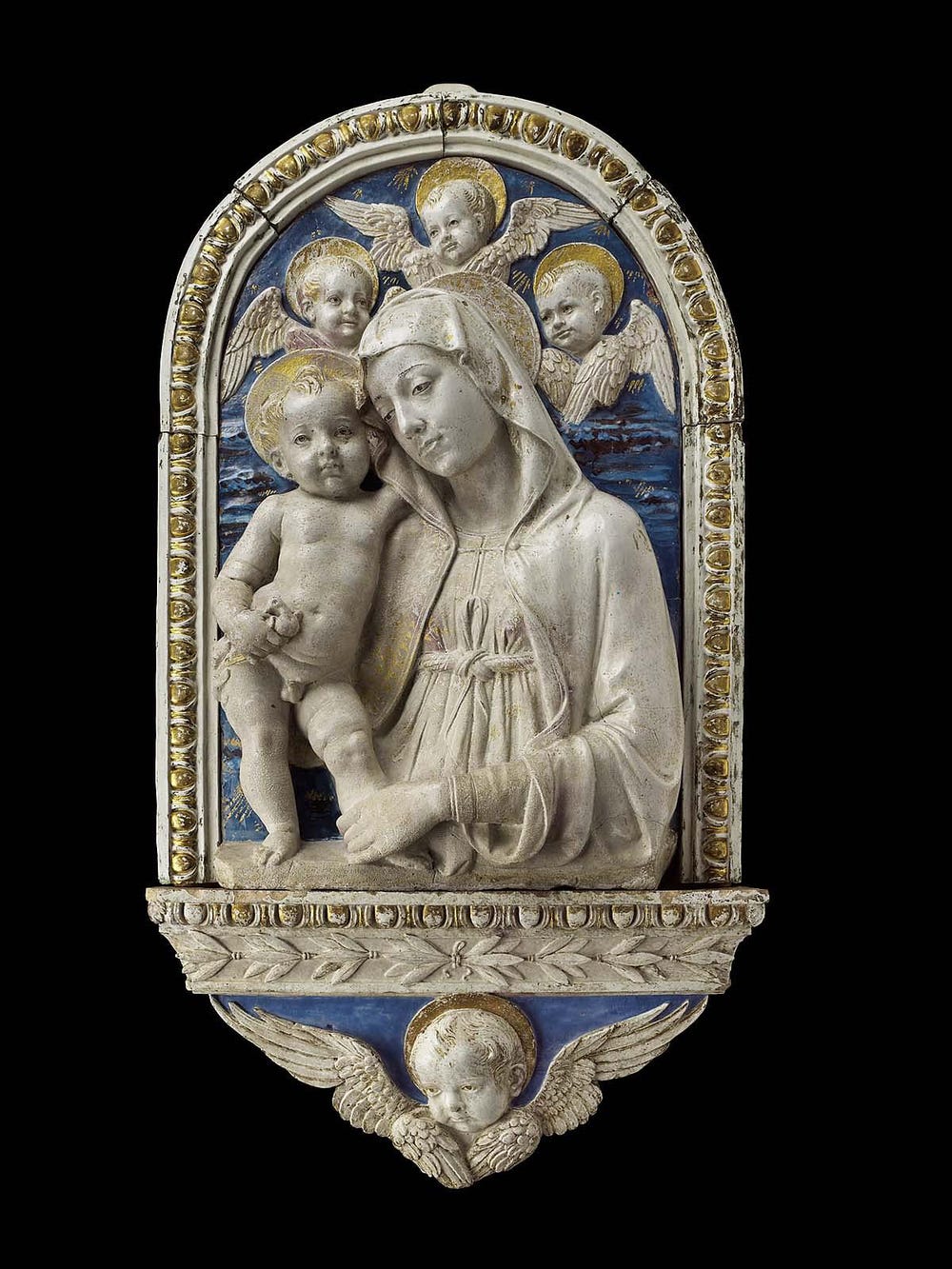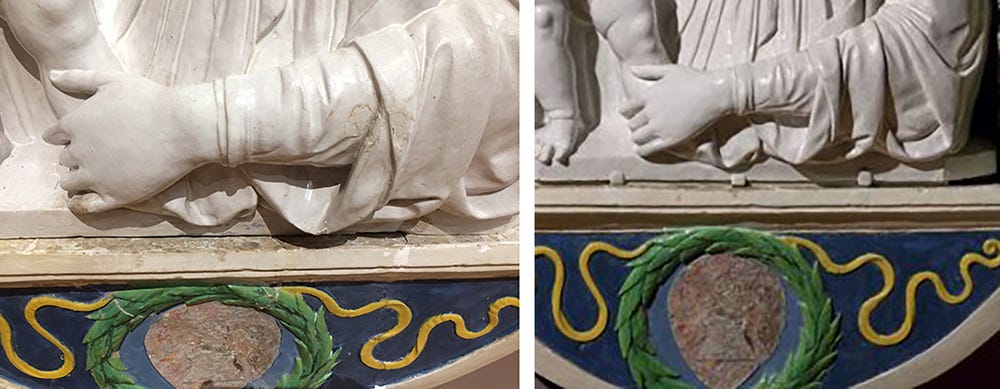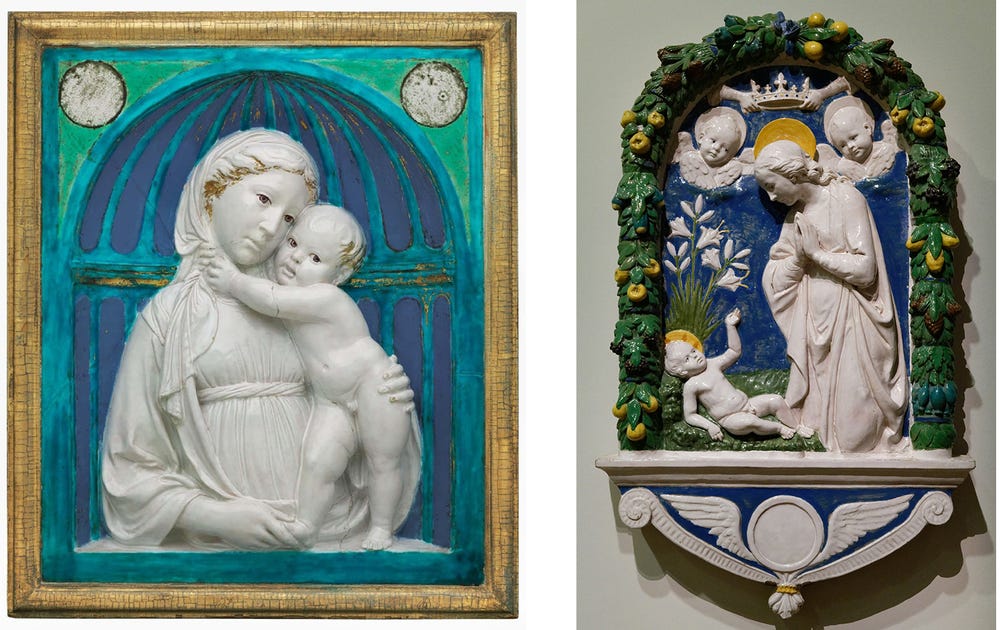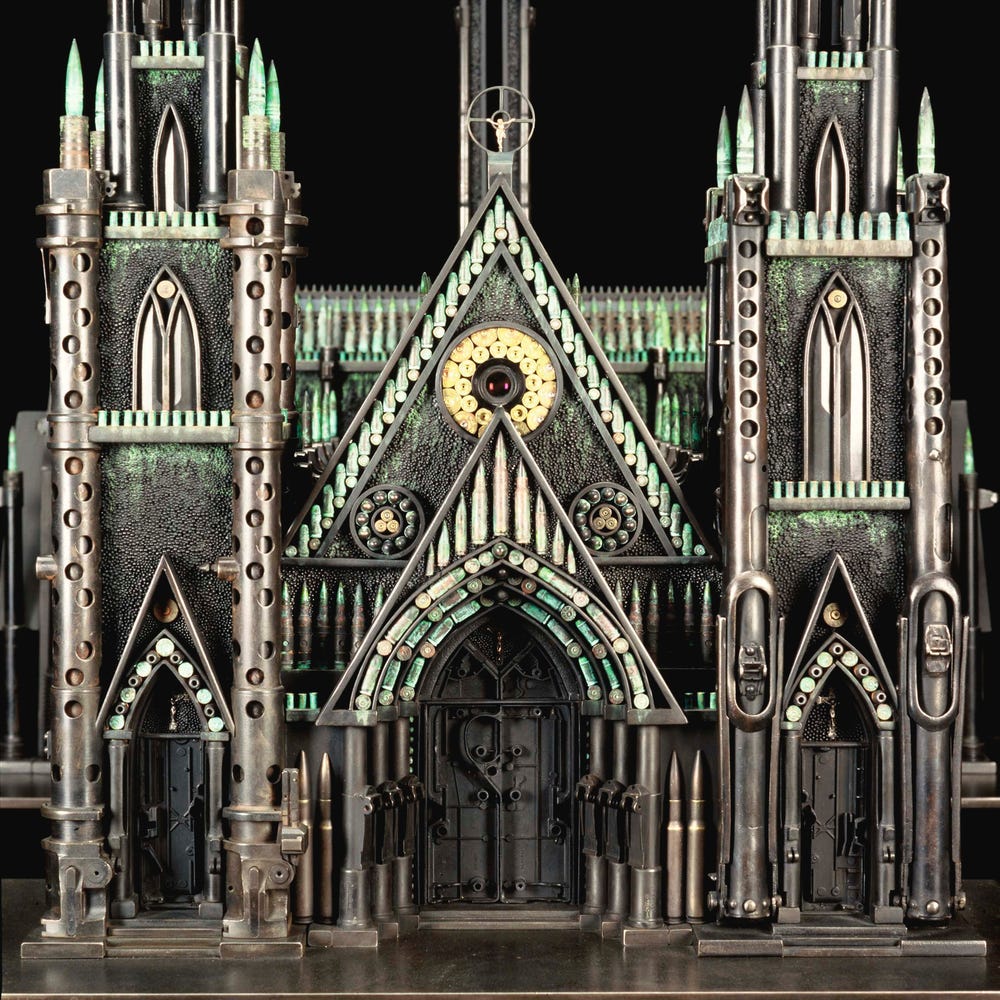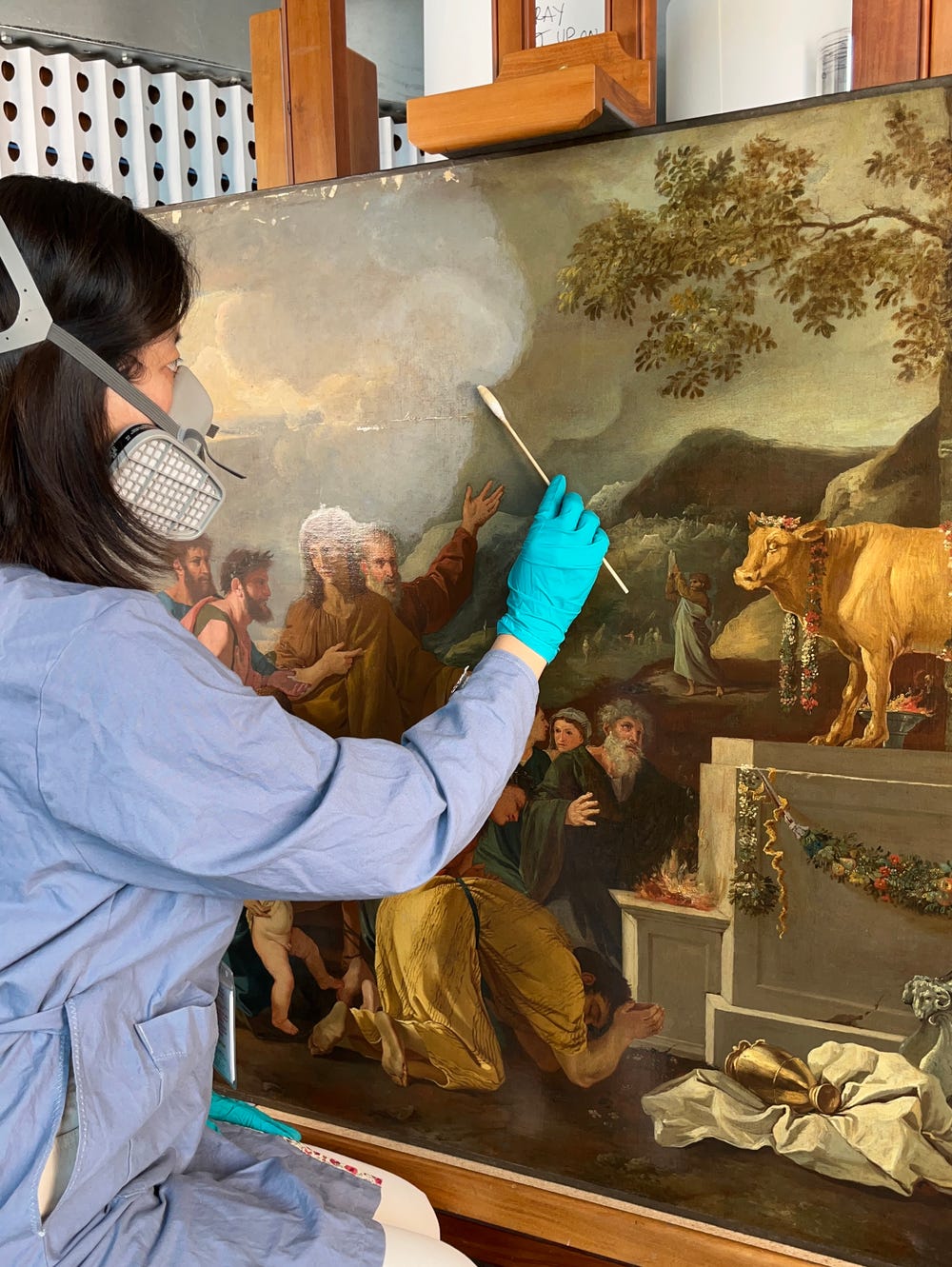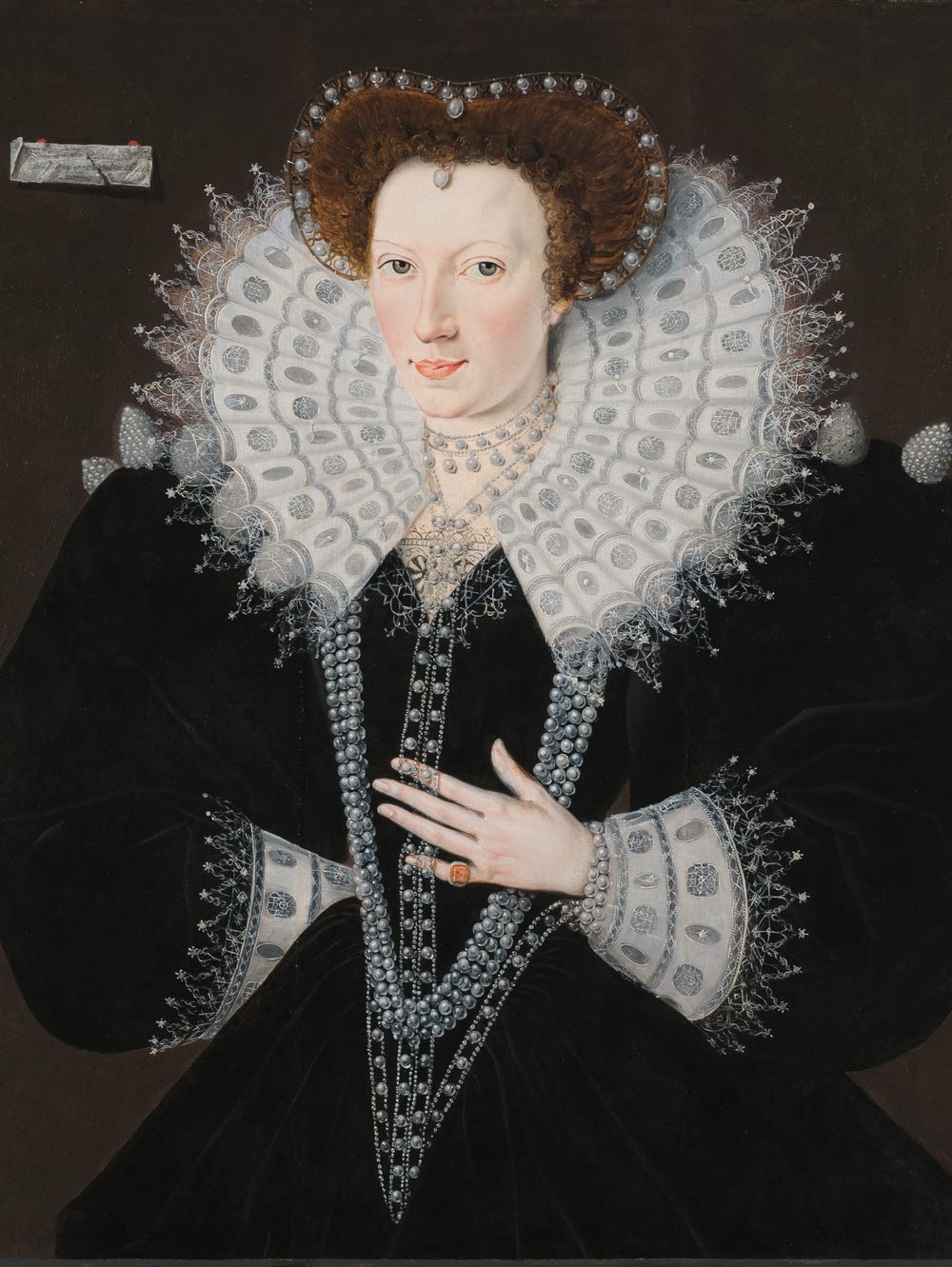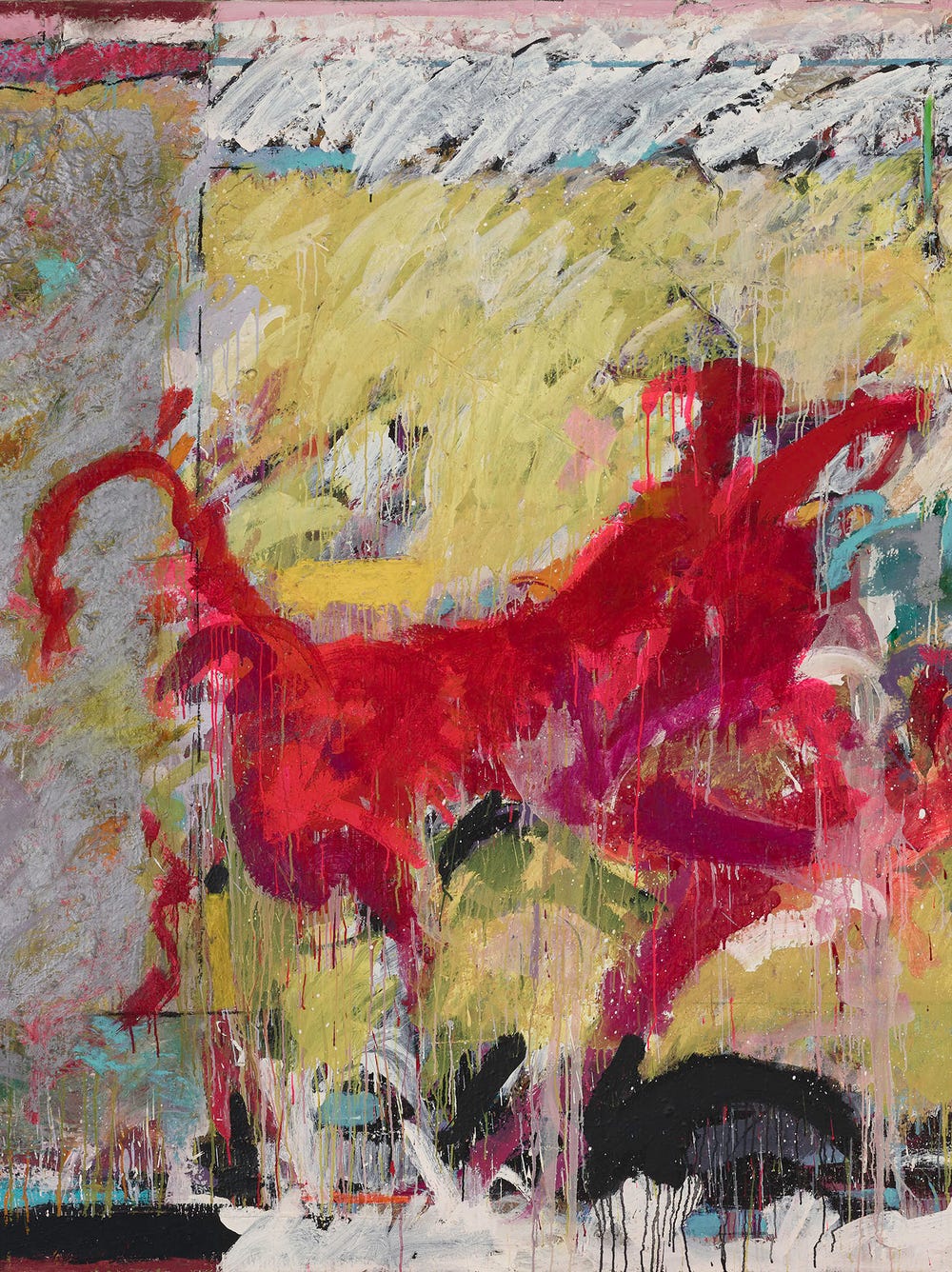Family Business: Della Robbia’s Renaissance Workshop
By Teresa Jiménez-Millas
February 24, 2022
In 2020 I had the good fortune to examine and treat The Virgin and Child with Putti, ca. 1490 – 1495, a glazed terracotta relief by Andrea della Robbia. Della Robbia was an Italian family of highly skilled artists in Renaissance Florence. Their workshop developed ingenious techniques that gave ceramic sculptures a prominent place in public spaces. Luca della Robbia, the family’s original innovator, experimented with ways to create large-scale ceramic sculptures, using durable glazes that made them suitable for exterior display and bright colors that heightened their visibility. The Fine Arts Museums of San Francisco's relief was made by Luca’s nephew, Andrea, who inherited the secret methods and the business, and later passed them onto his sons. The artists worked closely with their apprentices and assistants , and it is not always possible to clearly differentiate the authorship of particular reliefs.
The techniques and production methods of the Della Robbia workshop made their artworks very popular. As Marietta Cambareri, senior curator of European sculpture at the Museum of Fine Arts, Boston, notes in Della Robbia: Sculpting with Color in Renaissance Florence, “Because clay was inexpensive and readily available, one did not have to be rich to own a Della Robbia. The value lay more in the skill than in the cost.” The use of molds in the fabrication process allowed the workshop to replicate popular models much faster, accelerating production and new commissions. Religious orders and aristocratic families all wanted a “Della Robbia'' as a sign of status on their buildings. The number of Della Robbia works that still adorn buildings in Florence and the walls of museums around the world is a testament to the skill and business success of the Della Robbias and to the permanence of their materials.
Andrea della Robbia, Virgin and Child with Putti, ca. 1490–1495. Glazed terracotta relief, 48 1/16 x 32 1/16 in (122 x 81.5 cm). Fine Arts Museums of San Francisco, Museum purchase, Alfred S. Wilsey Memorial Fund, 2003.1
The Virgin and Child with Putti relief comprises a central section with the Virgin and Child; on top of it lies a section with three cherubs. The central ensemble is surrounded by a vivid garland of fruits and leaves, which marks the transition from the natural world to the sacred space of the image. It likely resembles the festive garlands of real fruits and flowers that decorated buildings and streets in Florence for weddings and parades. The central image of the Virgin and Child was a classic representation repeated by the family’s workshop over its 100 years of operation.
In sharing some details on the technique and materials used in this artwork, I hope that the next time you visit the Legion you will spend some time in front of this relief, thinking about the innovations that are locked within its shiny armor.
So how was this relief of the Virgin and Child made? It started with one of the oldest sculptural materials: clay. Because clay is found throughout the world, artisans usually take advantage of a readily available, local source. The Della Robbia workshop collected its clay from the Arno riverbanks in Florence. This clay was carefully cleaned and mixed with water to make it pliable and then formed by either hand modeling, pressing the clay into plaster molds, or a combination of both methods. The molds facilitated the consistent replication of images, such as this Virgin and Child, a motif used frequently in the 100 years the workshop remained active. When comparing different versions, variation in details between the central images is visible. These reliefs could have been made from common molds with some handmade details added or changed afterward before the clay dried completely. One detail on our relief — a glazed terracotta modesty drape on the infant Jesus — was added much later.
(left) Andrea della Robbia, Virgin and Child with Putti, ca. 1490–1495. Glazed terracotta relief, 48 1/16 x 32 1/16 in (122 x 81.5 cm). Fine Arts Museums of San Francisco, Museum purchase, Alfred S. Wilsey Memorial Fund, 2003.1. (center) Andrea della Robbia, The Virgin and Child with three cherubs, arched frame adorned with fruit and foliage, ca. 1475–1500. Glazed terracotta, 0.9 x 0.73 x 0.165m. Gigli collection. Louvre Museum. © 2006 Louvre Museum / Pierre Philibert. (right) Andrea della Robbia, Virgin and Child, ca. 1475–1500. Blue and white enameled terracotta in a polychrome enameled terracotta frame, 121.9 x 73.7cm. Victoria and Albert Museum, 7547–1861
During this period the size of ceramics was limited by the size of kilns. The Della Robbias overcame this limitation by forming their compositions from multiple pieces that were joined after firing. The joins were skillfully hidden by placing them along the contours of the relief. The Museums' Renaissance masterpiece is made of 10 molded and modeled sections.
The 10 separate pieces of Virgin and Child with Putti. Graphic overlay by Teresa Jiménez-Millas
Once the clay was dried and the sculpture was formed, in one piece or in sections, it was fired twice in the kiln, transforming the clay into a hard ceramic material: terracotta. The word terracotta means “cooked earth” in Italian and refers to earthenware clay that has been fired in a kiln.
The first firing transformed the clay into a ceramic and took several days. Controlling the firing temperature and process depended on the experience and the refined craftsmanship of the workshop. After this firing the ceramic was coated with an opaque white glaze that set off the clear colors of the design from the brownish color of the terracotta. Our analysis of the glazes confirmed the presence of tin (contributing the white color and opacity) and lead oxides (creating translucent, shiny, low-fire glazes). The masterful use of imported tin in their glazes was one of the innovations of ceramic artists in Renaissance Italy. The images were then enhanced and details added by painting over this white backdrop with a range of brightly colored glazes. We detected the same, widely available metal oxides used to color other Della Robbias and ceramics of this time, such as cobalt for the blues, copper for the greens, and manganese for the purples. The second firing took place after the application of glazes. In some cases paint or gold leaf were applied to the surface after the firing, in areas such as the halos.
Andrea della Robbia, Virgin and Child, First quarter of the 16th century. Glazed terracotta, Overall: 39 13/16 x 24 13/16 in (101.2 x 63 cm), Console: 12 3/8 x 22 5/16 in (31.4 x 56.7 cm). Gift of Quincy Adams Shaw through Quincy Adams Shaw, Jr., and Mrs. Marian Shaw Haughton, Museum of Fine Arts Boston, 17.1474. Photograph courtesy of the Museum of Fine Arts Boston
Some aspects of the workshop practice remain mysterious. In the Victoria and Albert Museum's relief, and ours, the central image and the console it rests on do not fit snugly together. These sections could have been commissioned or selected separately, or made by different people in the workshop. Because the elements remain separable, they also could have been assembled later.
My primary goal in studying and treating this relief was to improve the appearance of damaged areas and old restorations in order to highlight the beauty of the original work. As with many conservation projects, close examination led to more questions.
Details of Virgin and Child with Putti before treatment, showing surface damage and old repairs, and after treatment
The most enigmatic part of the relief is the console and its central coat of arms. Coats of arms could be added during manufacture as part of the relief and colored glazes or painted on afterward. Images from the Boston MFA and the Louvre show areas left unglazed or glazed white for coats of arms to be added later.
(left) Luca della Robbia, Virgin and Child, ca. 1448. Glazed terracotta, Overall: 20 7/8 x 17 1/2 x 2 3/4 in (53 x 44.5 x 7 cm). Gift of Quincy Adams Shaw through Quincy Adams Shaw, Jr., and Mrs. Marian Shaw Haughton, Museum of Fine Arts Boston, 17.1475. Photograph courtesy of the Museum of Fine Arts Boston. (right) Andrea della Robbia, Madonna and Child, circa 1480–1490. Enameled terracotta and polychromy, 45.2 x 271. x 8.6 in (115 x 69 x 22 cm). Musée Antoine Vivenel, Louvre Museum, Cp 44. Photograph by Marie-Lan Nguyen via Wikipedia
The coat of arms in the Museums' relief has been extensively damaged and repaired over its history. What is visible in this area now is primarily the color of the underlying terracotta, where the surface has been chipped and abraded away, with traces of the outline of a tower. A change of ownership at some point may have led to someone removing or altering the previous owner’s crest. Under the microscope I detected traces of yellow glaze, red paint, and a speck of gold leaf, but the original crest and later alterations to it remain an enigma.
(left) X-radiograph of Virgin and Child with Putti central area of console showing breaks, older “staple” repairs, and modern mounting hardware. Image by Colleen O'Shea. (right) Console piece with central area for crest
The conservation of The Virgin and Child with Putti allowed us to study a revolutionary production method and its artistic technique. Luca della Robbia and family were what today we would call disruptors. They transformed the way sculpture was displayed by stretching the boundaries of what was possible with clay and colorful glazes.
Text by Teresa Jiménez-Millas, former assistant objects conservator at the Fine Arts Museums of San Francisco.
Resources
- Cambareri, Marietta. Della Robbia: Sculpting with Color in Renaissance Florence (Boston: MFA Publications, Museum of Fine Arts, Boston, 2016).
- Della Robbia: Sculpting with Color in Renaissance Florence. Museum of Fine Arts, Boston, August 9–December 4, 2016.
- McNab, Jessie. “Maiolica in the Renaissance.” Heilbrunn Timeline of Art History. The Metropolitan Museum of Art, 2002.
